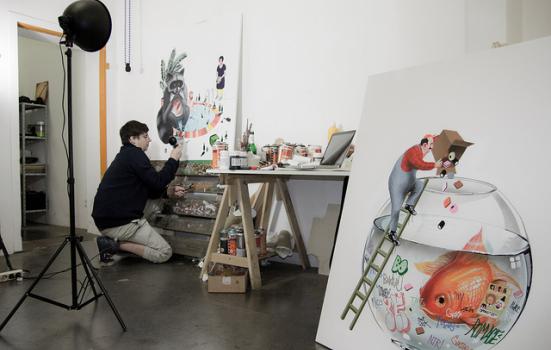Ensuring policy makers and commissioners value artists and art equally is at the heart of a-n’s new five-year strategy.

Artist network a-n has pledged to tackle challenges artists face in sustaining their careers, and ensure policy makers and commissioners value artists and art equally.
Focusing on issues such as fair payment, Brexit and diversity, the newly-published strategy, Valuing Artists, will guide a-n as it develops and delivers campaigns that “articulate and challenge the big issues visual artists will face over the next five years”.
“As a sector, the visual arts make a significant contribution to our economy and our international reputation,” said a-n Director Jeanie Scott. “However, as a nation we do not place the same value on the artists that create the work and reputation we cherish.
“Artists are resilient but we have got to recognise and find solutions to the unique set of challenges they face. The Valuing Artists strategy is about working with our members, our partners with shared interests and with local, regional and national policy makers to do just that.”
Key objectives
The strategy builds on research produced by the network, which finds most artists are self-employed, earn less than £10k a year, and are particularly vulnerable to political and economic change: 12% of a-n’s 21,000 members hold a non-UK passport and 50% are over 50 and have no pension.
Valuing Artists has four key objectives:
- To ensure visual artists are adequately valued, by providing evidence and a “strong narrative” to place artists and visual arts in a wider context
- To make a Brexit that “works for visual artists in the UK” and focuses on freedom of movement, residency and rights, both during and after the UK’s withdrawal from the European Union
- To continue to push for fair payment of artists, articulate the range of issues impacting artists’ livelihoods, and promote “credible solutions” to such issues to Government
- To measure the scale and impact of diversity in artist-led practice, and promote greater diversity at all levels of the sector
“We know the visual arts (and artists) are less mobilised than other culture sectors, often lacking the compelling evidence needed to demonstrate its contributions to society and the economy and to make its case stand out amongst those of other artforms,” the strategy continues.
“Valuing Artists will challenge this track record and plug the critical gaps in evidence so that visual artists are clearly seen as part of the wider success of the visual arts in the UK, creating their own distinctive case which make the most of opportunities presented.”




